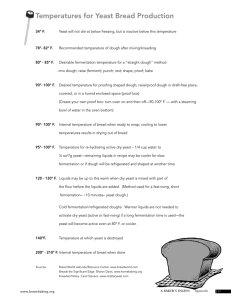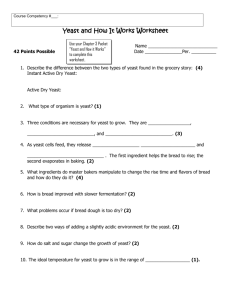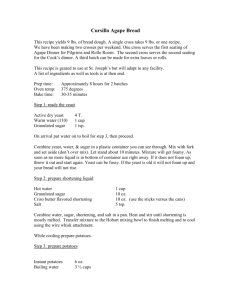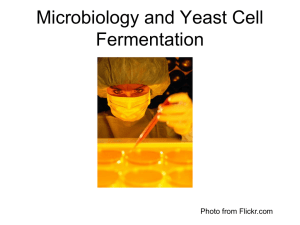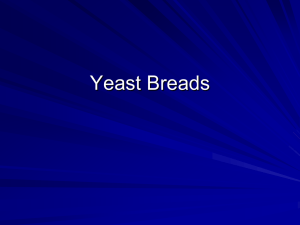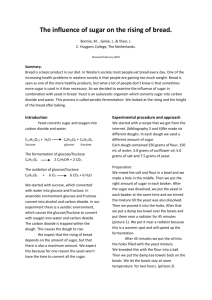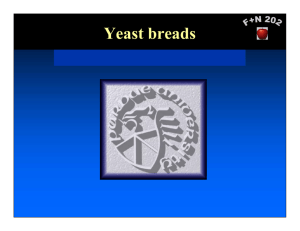Fermentation of Sugar in Bread by Yeast
advertisement
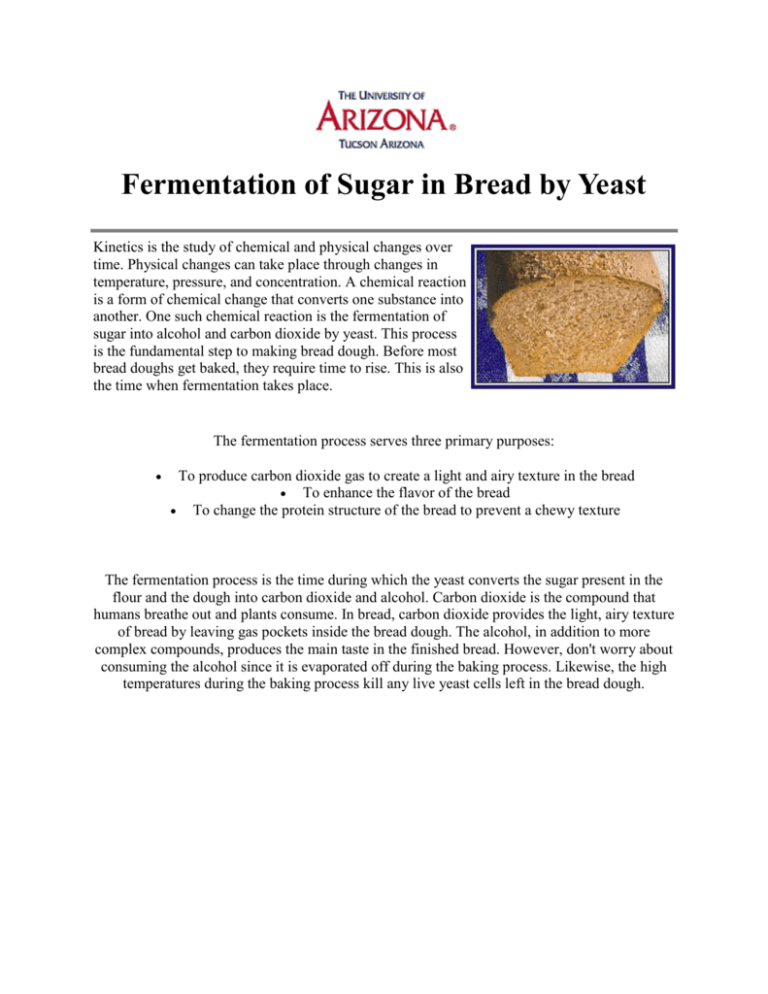
Fermentation of Sugar in Bread by Yeast Kinetics is the study of chemical and physical changes over time. Physical changes can take place through changes in temperature, pressure, and concentration. A chemical reaction is a form of chemical change that converts one substance into another. One such chemical reaction is the fermentation of sugar into alcohol and carbon dioxide by yeast. This process is the fundamental step to making bread dough. Before most bread doughs get baked, they require time to rise. This is also the time when fermentation takes place. The fermentation process serves three primary purposes: To produce carbon dioxide gas to create a light and airy texture in the bread To enhance the flavor of the bread To change the protein structure of the bread to prevent a chewy texture The fermentation process is the time during which the yeast converts the sugar present in the flour and the dough into carbon dioxide and alcohol. Carbon dioxide is the compound that humans breathe out and plants consume. In bread, carbon dioxide provides the light, airy texture of bread by leaving gas pockets inside the bread dough. The alcohol, in addition to more complex compounds, produces the main taste in the finished bread. However, don't worry about consuming the alcohol since it is evaporated off during the baking process. Likewise, the high temperatures during the baking process kill any live yeast cells left in the bread dough. Yeast cells are a collection of single-cell fungi that will rapidly reproduce in the right conditions. Yeast requires a form of sugar or starch as food and a moist environment to grow in. The best temperature for growth is from 110°F to 115°F, but the best products for making bread are formed from 80°F to 95°F although the growth rate achieved is smaller. If bread dough is kept colder than this temperature range, the yeast will not grow sufficiently. On the other hand, if water that is too hot is added to yeast, the yeast cells will not grow since the high temperatures will have killed them. A temperature of 140 ° F will kill most yeast cells. Obviously, the temperature at which bread dough rises is important to the overall results. Arrhenius' equation describes the changing yeast growth rate constant based on the temperature: k = A*exp(-E/R*T) where: k is the growth rate constant A is called the pre-exponential factor (another constant) E is the activation energy R is the gas law value (yet another constant) T is the temperature Here are some examples to work involving growth rates. Calculation of the activation energy in a reaction. Calculation of the rate constant of a reaction. Calculation of how the rate constant changes with temperature. What whould happen if we wanted to make a loaf of bread in, say Denver? The effects of air pressure on bread. Return to the Energy page Return to the Kinetics page [Introduction | Kinetics | Heat Transfer | Mass Transfer | Bibliography] This project was funded in part by the National Science Foundation and is advised by Dr. Masel and Dr. Blowers at the University of Illinois. © 2007 Arizona Board of Regents for The University of Arizona
